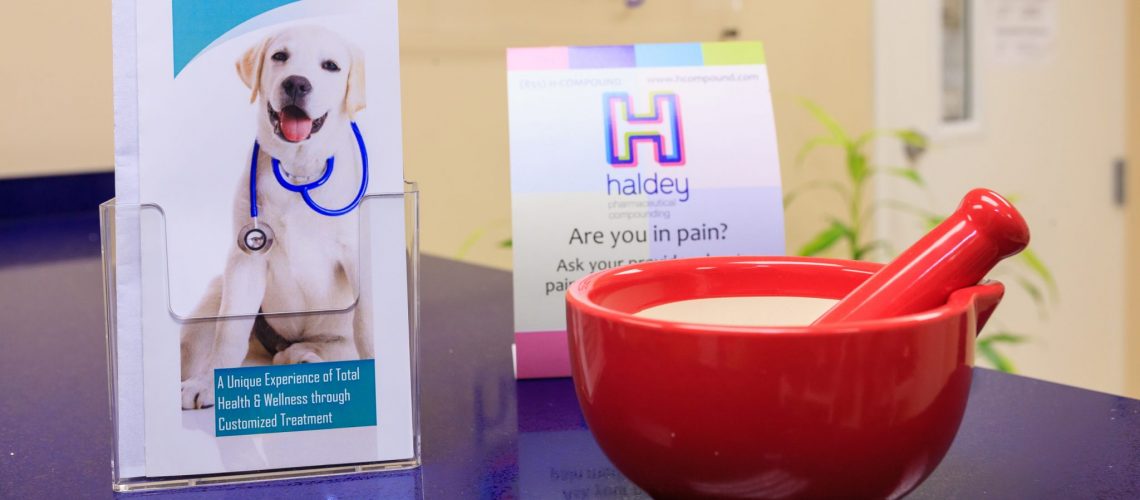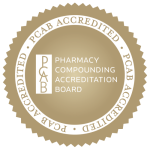Add More Value to Your Practice
As an already successful veterinarian, you can add more value to your practice by using a veterinary compounding pharmacy.
You might know that it will enhance your practice by offering customized treatment options to your veterinary patients when commercial drugs cannot help or are not available.
You may also know that it will also help make the pet owners’ life easier when administering custom flavored, custom sized medication to their “fur-kids” in a dosage form they better tolerate. And this will lead to better compliance for the vet patient and a happier pet owner.
So, what is pharmaceutical compounding?
The definition for pharmaceutical compounding may be very elaborate depending on the author’s perspective. A simpler version of defining pharmaceutical compounding (from PCCA – Professional Compounding Center of America) is:
“Pharmacy compounding is the art and science of preparing personalized medications for patients. Compounded medications are made based on a practitioner’s prescription in which individual ingredients are mixed together in the exact strength and dosage form required by the patient.”
What is veterinary compounding?
Veterinary compounding is somewhat different from compounding for humans.
Even though veterinary compounding is regulated by State Boards of Pharmacy as part of pharmaceutical compounding in general, FDA is more restrictive in the use of bulk drug ingredients in compounding for veterinary patients. This means the regulations differ from state to state, with FDA having superseding power.
So is the veterinarian practice. It must comply with State Boards of Veterinary Medicine law. That being said, in many states, there are no clear rules specific to veterinary compounding and the use of it by veterinarians.
The definition of veterinary compounding from AVMA reads like this:
“Simply put, compounding is any manipulation of a drug beyond that stipulated on the drug label. Veterinary drugs should only be compounded based on a licensed veterinarian’s prescription, and to meet the medical needs of a specific patient. Manipulation might include mixing, diluting, concentrating, flavoring, or changing a drug’s dosage form.”
More information about the specifics of veterinary compounding in a state can be obtained from the respective State Board of Professions. AVMA also provides regular legislative updates to its members, including the ones related to veterinary compounding and prescribing for compounded medication.
Types of Compounding
Now that we understand the basics of pharmaceutical compounding and veterinary compounding let us go a bit further and learn about the types of compounding:
There are two categories of pharmaceutical compounding: sterile and non-sterile.
The biggest distinction between non-sterile and sterile compounding refers to how the drugs are administered.
- Nonsterile drug compounding is the old practice of preparing specific medication doses for patients in various routes of administration, and it is the most common kind of drug compounding. Most of the specialized compounding pharmacies do only non-sterile compounding.
Despite its nonsterile designation, making customized medication according to legal and professional standards requires adhering to strict rules for:
- ensuring and maintaining active pharmaceutical ingredient purity and potency;
- ensuring the accuracy of mixing;
- providing proper packaging, storage, and labeling;
- and keeping all work surfaces and equipment clean always.
A large variety of dosage forms can be made through nonsterile compounding:
- Topical and/or transdermal – creams, lotions, solutions, sprays, ointments, gels, etc.
- Oral – tablets, capsules, suspensions, solutions, etc.
- Buccal – lozenges, lollipops
- Sublingual – drops, rapid dissolve tablets, gels, etc.
- Rectal/vaginal – suppositories, gels, ointments, capsules, enemas, etc.
- Sterile compounding comes with a much more rigorous set of rules needed for the sterile environment that must be maintained in the clean rooms. Because of the higher risk for bacterial contamination in the injectable form of administration, preventing the contamination is the focus of sterile compounding. That is why compounders must work in completely sterile environments like clean rooms.
Other major focus points of sterile compounding are potency and stability. Medication intended for injection, infusion or application to the eye must be compounded according to the rules and standards for sterile compounding.
Compounding Standards
Compounding standards both for sterile and nonsterile compounding are set by the United States Pharmacopeia Convention (USP). USP is a non-profit that has an established a process for convening experts for the development and maintenance of healthcare quality standards.
There are three applicable major USP chapters:
- USP 795 that refers to nonsterile compounding
- USP 797 that refers to sterile compounding
- USP 800 that refers to safe handling of hazardous drugs in healthcare settings
Our discussion relates to the first two chapters:
USP Chapter 795 provides standards for compounding quality nonsterile preparations. The chapter describes requirements for the compounding process and provides general guidelines for assigning beyond-use dates to nonsterile preparations.
USP Chapter 797 outlines several requirements, including responsibilities of compounding personnel and storage and testing to name a few. Medications that are required to be sterile include those administered through injection, intraocular (injection in the eye), intravenous infusion (IV), or intrathecal (injection in the spine).
USP develops standards for preparing compounded sterile drugs to help ensure patient benefit and reduce risks such as contamination, infection or incorrect dosing.
Haldey offers both sterile and non-sterile compounding for Veterinarians.
Sign up for our email list to be the first to learn about our upcoming sterile compounding services!
Let Haldey Pharmaceutical Compounding be the choice for your business.
The expert staff at Haldey can help you determine the best compounding solution for your veterinary practice. Contact us today for a free evaluation!




